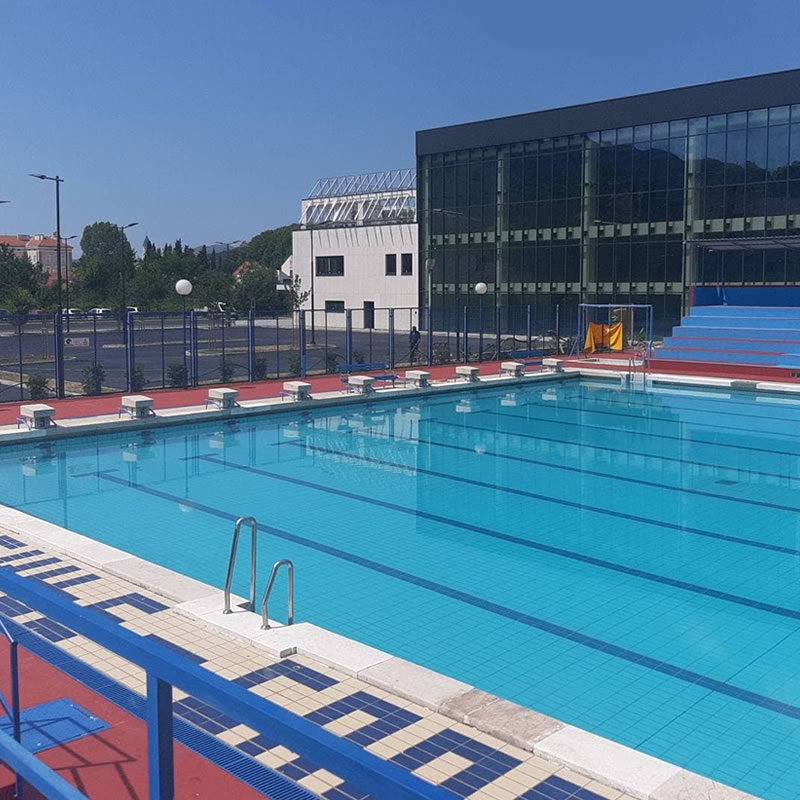

Trebinje is located in the southernmost part of Republika Srpska and BiH and covers an area of 904 km2. The climate is Mediterranean with 260 sunny days a year, which makes it the warmest city in Bosnia and Herzegovina. It is located in the valley of the river Trebišnjica, on the tri-border of Bosnia and Herzegovina, Montenegro and Croatia, in the hinterland of the southern Adriatic. Numerous famous poets and writers have written about Trebinje, and while for some it is the southernmost and most beautiful Serbian town, for others it is an oasis of peace and sunshine, just 27 kilometers from the blue Adriatic.
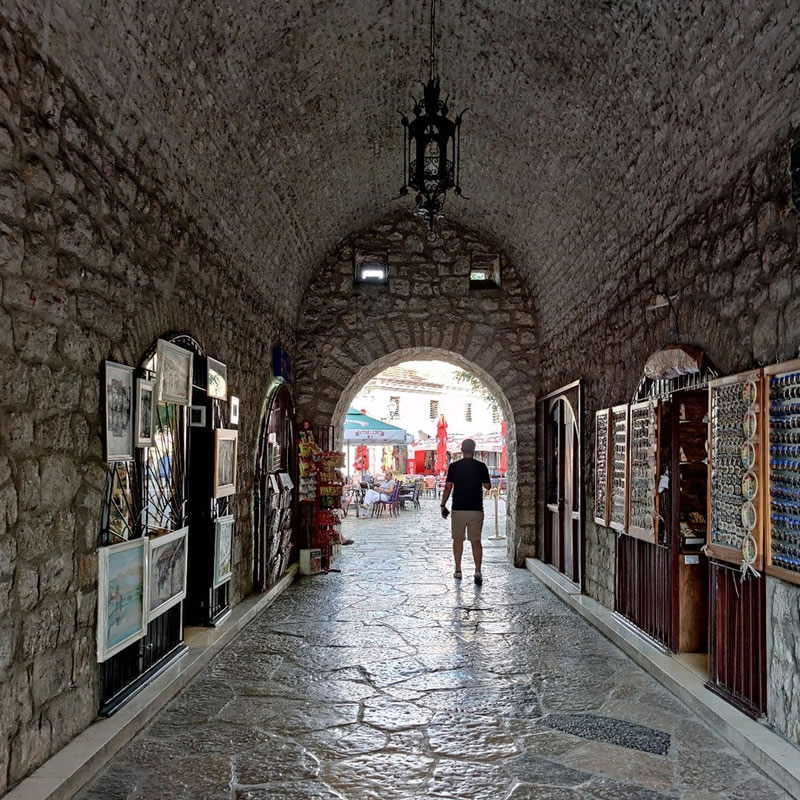
The old town was created as the Turks needed to organize their possessions in Herzegovina. It was built on the right bank of the Trebišnjica above the deepest place in the river, the so-called Ban-vira, named after the legend of a ban who drowned in a river. The greatest credit for the development of the city as a fortress goes to Osman Pasha, the founder of the Resulbegović family. In 1714, he began work on the city, which was briefly interrupted by the war with Venice. He brings craftsmen from Dubrovnik, and labor from surrounding towns. The following year, a ditch was dug around the town, which is connected to Trebišnjica. During his time, the “Sultan-Ahmed” and “Osman-Pasha” mosques were built, as well as the “clock tower” which has successfully defied the test of time. “Kastel” initially had the shape of a triangle, which was rounded over time. In front of the entrance gate, on the walls, there was a drawbridge that led over the canal, which was later buried due to the danger of an infectious disease epidemic on the advice of Dr. Levi (in 1932).
Water is the most important resource of Herzegovina. Trebišnjica, once the largest sinkhole in Europe (98 km), which in its most beautiful part flows through the city, offers a huge untapped potential. Due to the calm flow, it is suitable for sports disciplines. Exceptional purity and clarity are suitable for diving, and it is also an attraction for fishermen. It is home to endemic species of “gaovica” and the famous “man fish” that inhabits its underground streams. Along the banks of the river there are numerous picnic spots, among which the most popular are “Studenac” and “Lastva”. The shores are connected by a large number of bridges, of which the Arslanagića (Perovića) bridge, the Ivo Andrića bridge, and the Kameni bridge stand out for their beauty. The waters of Trebišnjica flow through Gatačko, Cerničko and Fatničko polje, where they are lost in abysses and rise again south of Bileća under the name of Trebišnjica. The waters of Trebišnjica also appear as the source of the Omble River in Dubrovnik, and flow underground into the Neretva.
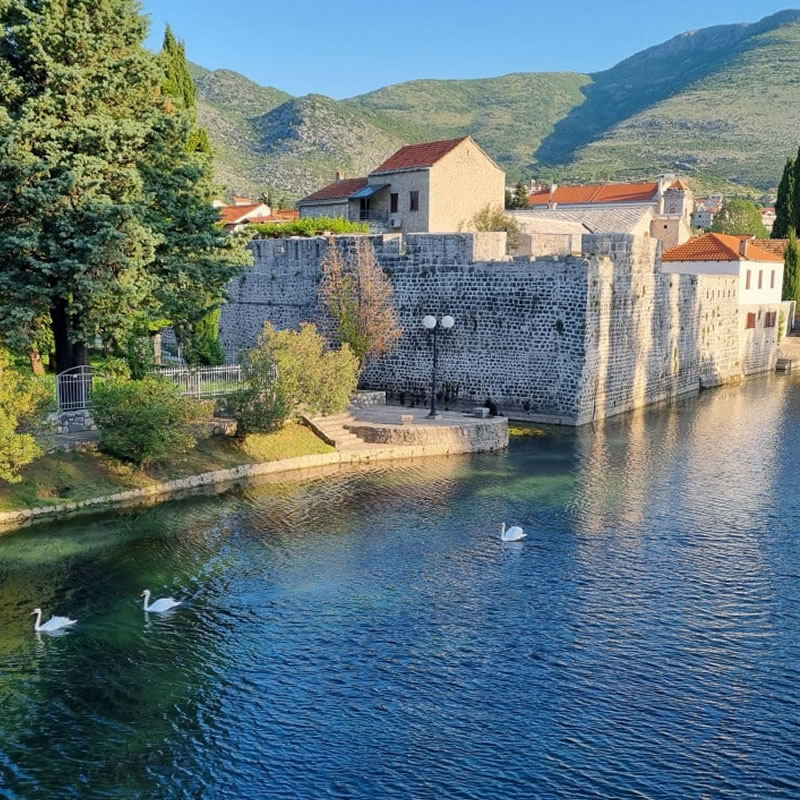
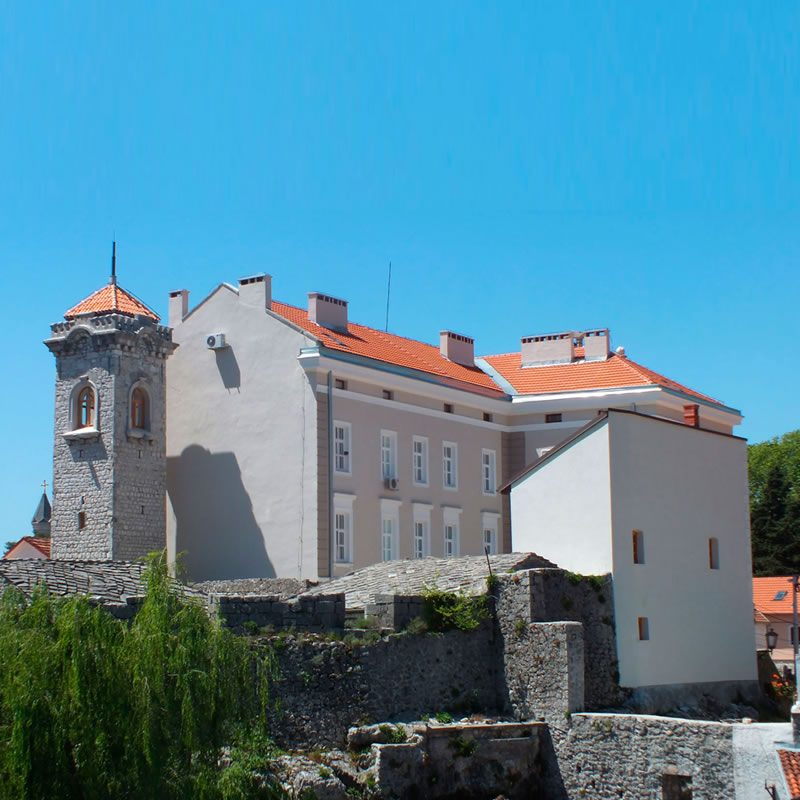
The museum was created as a result of the idea of the most famous Trebinje resident, poet and diplomat, Jovan Dučić. It was founded in 1952. The first archaeological excavation was carried out by the museum in 1957 at the church of St. Peter in Zavala. The first publication, entitled Trebinje I, was published by Vasilija Korać in 1966. In 1975, he launched the magazine Tribunija. It has about 1,500 m² of usable space, of which about 800 m² is exhibition space. In addition to permanent exhibitions and legacies, occasional exhibitions, poetry recitals, book promotions and music concerts are held in the premises of the Museum of Herzegovina.
Plane trees are one of the most recognizable symbols of Trebinje. For many visitors to the city, the Platani summer garden is an oasis on hot days where they can refresh themselves in the shade of over 120-year-old trees. With the natural shade of 16 tall plane trees and over 500 seats, in the heart of the city, this garden is unique and represents a favorite meeting place of all Trebinje generations, as well as guests who pass through this city on their way to the Adriatic Sea.
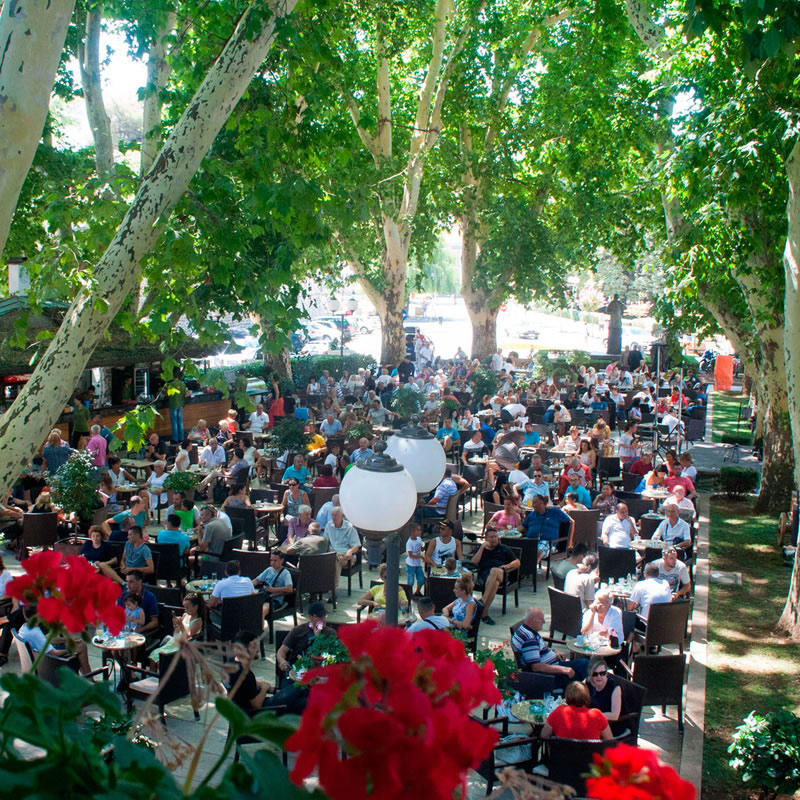
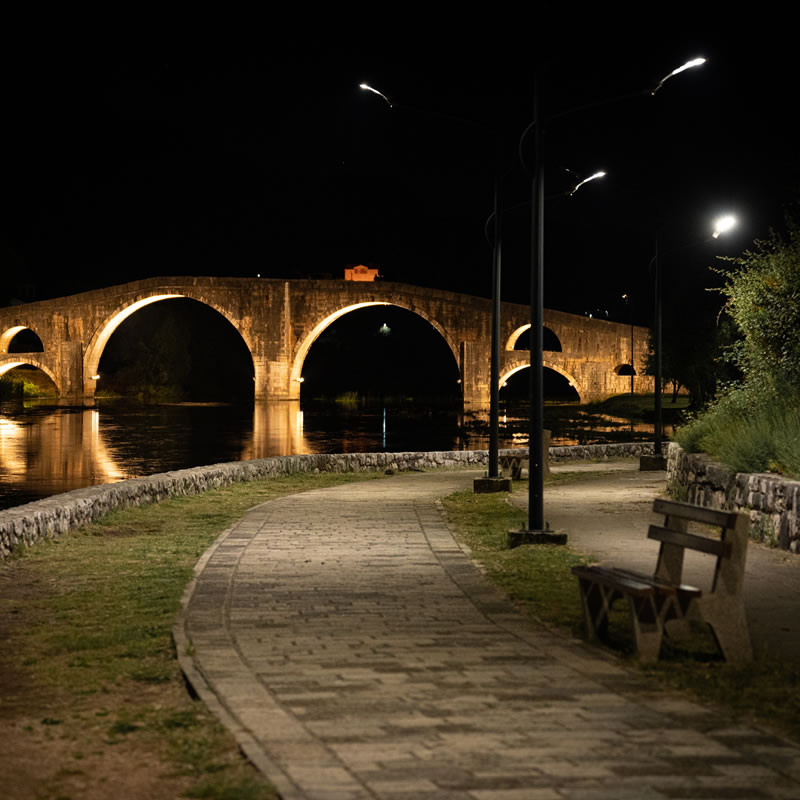
The Arslanagića (Perovića) bridge is the most famous monument from the Turkish period in Trebinje and has a very important place in the Balkan architecture of the 16th century. The bridge was built by Mehmed Pasha Sokolović in 1574, during the Turkish occupation, as an endowment for his son who died in the battle with the Venetians. When the Turks were pushed out of Herceg Novi in 1687, many Turkish families moved from this city to Trebinje. Among them was a certain Arslan-aga. He received properties east of Trebinje, and the right to collect tolls over the Trebišnjica bridge. After him, since then, the bridge has been called the Arslanagića bridge. With the construction of the hydropower system in Trebišnjica in 1965, the bridge found itself under the water of the reservoir lake. At the request of the Institute for the Protection of Cultural Monuments, the bridge was dismantled and moved downstream in 1966 when the reservoir was emptied. The new location of the bridge is between Gradina and Police.
The monument to the famous poet and diplomat Jovan Dučić, born in Trebinje, was erected in 1997. It is located directly in front of the main entrance to the City (Dučićev) Park, right across from the Monument to Peter II Petrović Njegoš, so this square is also called “Poet’s Square”. two women. In the park of Jovan Dučić, there is a monument erected in honor of the fallen fighters from the Trebinje region in World War II and the victory over fascism. The monument to the Braios of Trebinje 1991-1996 is more recent. It was ceremonially unveiled in 2011, and was erected in honor of the fighters from Trebinje, who fell in the civil war in Bosnia and Herzegovina from 1991-1995. years.
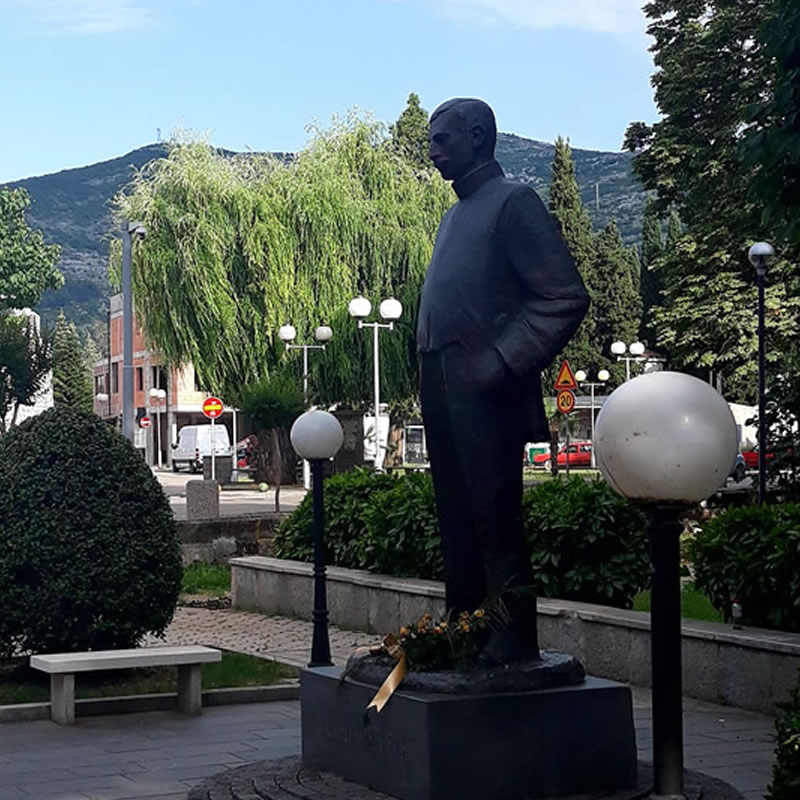
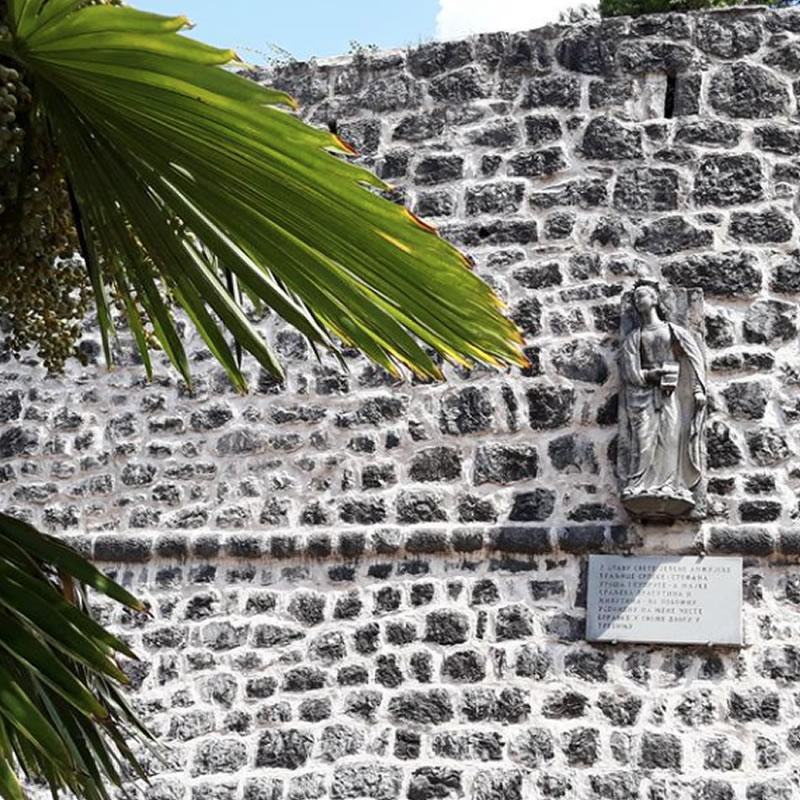
With the idea of enriching the rough walls of the old city with Mediterranean elements, Jovan Dučić gave the city, among other things, a graceful-looking Baroque figure of Queen Jelena Anžujska with a crown on her head. On the black marble tablet it is written: “In honor of St. Jelena Anžujska, queen of Serbia, wife of Stefan Uroš I, and mother of kings Dragutin and Milutin.” In pious memory of her frequent stays in her court in Trebinje.” The queen is represented by symbolically extending her hand with which, according to tradition, she gave gifts to the people during her visits to Trebinje, where she also had a court. The hand of Queen Jelena Anžujska is kept today in the Tvrdoš monastery.
The famous Anđelka’s gate in the Old Town of Trebinje, through which the actress Sloboda Mićalović entered the yard of a completely different house in the center of Belgrade in the series “The Wounded Eagle”, has become a brand in the town of Trebišnjica. Over the past nine years, since the series “Ranjerni orao” was filmed, Anđelka’s gate has become a real tourist attraction visited by a large number of guests from the region every year.
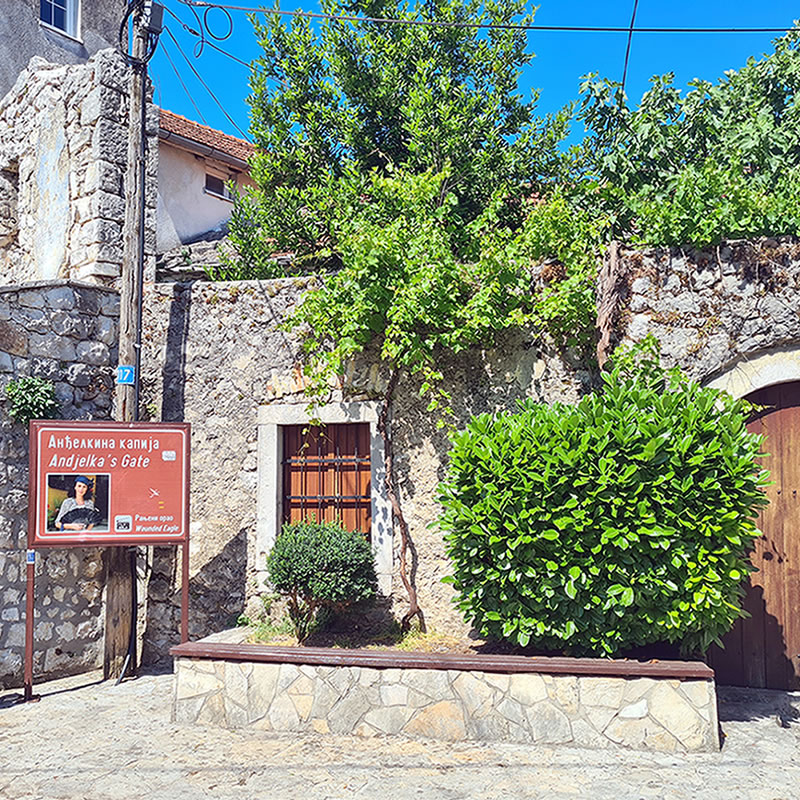
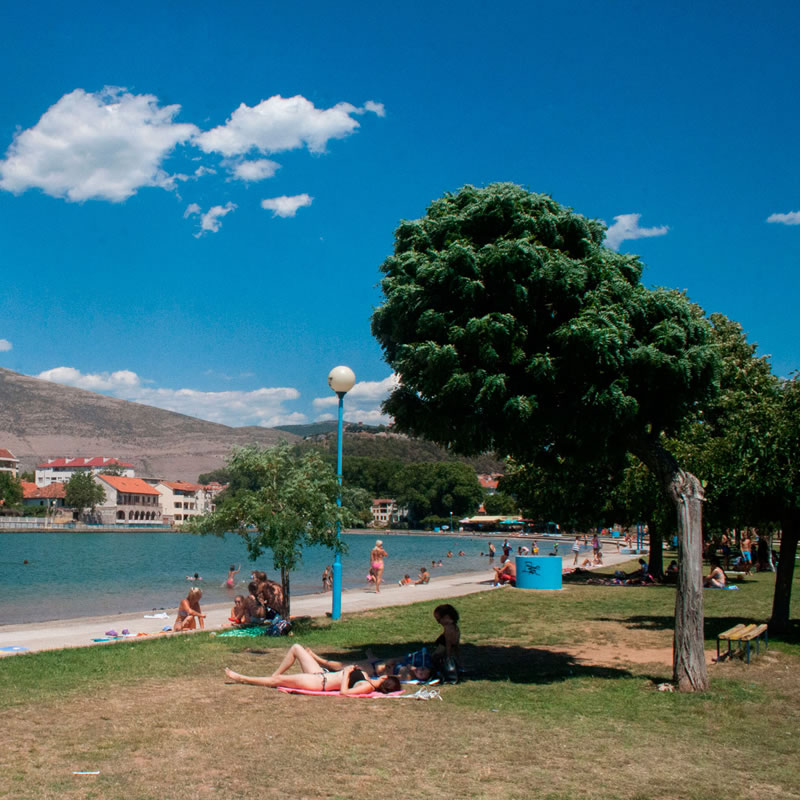
The Bregovi swimming pool is located on the Trebišnjica river in the city center. A favorite swimming spot for generations of Trebinje residents. Natural shade, sports fields, “outdoor work out”, summer bar are some of the facilities offered to visitors of this swimming pool.
The Olympic swimming pool “Banje” has been providing refuge on hot summer days to younger generations of visitors for many years. Water sports competitions are also organized at the pool every year. In addition to this pool, a modern indoor pool was put into operation in 2022.
